Acute Adenoviral Infection Elicits an Arrhythmogenic Substrate Prior to Myocarditis
- PMID: 38415360
- PMCID: PMC11003857
- DOI: 10.1161/CIRCRESAHA.122.322437
Acute Adenoviral Infection Elicits an Arrhythmogenic Substrate Prior to Myocarditis
Abstract
Background: Viral cardiac infection represents a significant clinical challenge encompassing several etiological agents, disease stages, complex presentation, and a resulting lack of mechanistic understanding. Myocarditis is a major cause of sudden cardiac death in young adults, where current knowledge in the field is dominated by later disease phases and pathological immune responses. However, little is known regarding how infection can acutely induce an arrhythmogenic substrate before significant immune responses. Adenovirus is a leading cause of myocarditis, but due to species specificity, models of infection are lacking, and it is not understood how adenoviral infection may underlie sudden cardiac arrest. Mouse adenovirus type-3 was previously reported as cardiotropic, yet it has not been utilized to understand the mechanisms of cardiac infection and pathology.
Methods: We have developed mouse adenovirus type-3 infection as a model to investigate acute cardiac infection and molecular alterations to the infected heart before an appreciable immune response or gross cardiomyopathy.
Results: Optical mapping of infected hearts exposes decreases in conduction velocity concomitant with increased Cx43Ser368 phosphorylation, a residue known to regulate gap junction function. Hearts from animals harboring a phospho-null mutation at Cx43Ser368 are protected against mouse adenovirus type-3-induced conduction velocity slowing. Additional to gap junction alterations, patch clamping of mouse adenovirus type-3-infected adult mouse ventricular cardiomyocytes reveals prolonged action potential duration as a result of decreased IK1 and IKs current density. Turning to human systems, we find human adenovirus type-5 increases phosphorylation of Cx43Ser368 and disrupts synchrony in human induced pluripotent stem cell-derived cardiomyocytes, indicating common mechanisms with our mouse whole heart and adult cardiomyocyte data.
Conclusions: Together, these findings demonstrate that adenoviral infection creates an arrhythmogenic substrate through direct targeting of gap junction and ion channel function in the heart. Such alterations are known to precipitate arrhythmias and likely contribute to sudden cardiac death in acutely infected patients.
Keywords: adenoviridae; arrhythmias, cardiac; death, sudden, cardiac; gap junctions; immunity; ion channels.
Conflict of interest statement
Figures
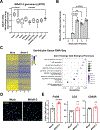
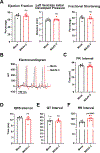

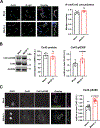

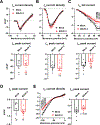
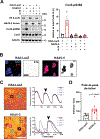

Similar articles
-
Adenovirus targets transcriptional and posttranslational mechanisms to limit gap junction function.FASEB J. 2020 Jul;34(7):9694-9712. doi: 10.1096/fj.202000667R. Epub 2020 Jun 2. FASEB J. 2020. PMID: 32485054 Free PMC article.
-
Human Connexin43E42K mutation from a sudden infant death victim leads to impaired ventricular activation and neonatal death in mice.Circ Cardiovasc Genet. 2015 Feb;8(1):21-9. doi: 10.1161/CIRCGENETICS.114.000793. Epub 2014 Dec 10. Circ Cardiovasc Genet. 2015. PMID: 25504652
-
Intracellular trafficking pathways of Cx43 gap junction channels.Biochim Biophys Acta Biomembr. 2018 Jan;1860(1):40-47. doi: 10.1016/j.bbamem.2017.05.018. Epub 2017 May 30. Biochim Biophys Acta Biomembr. 2018. PMID: 28576298 Free PMC article. Review.
-
Modulation of cardiac gap junction expression and arrhythmic susceptibility.Circ Res. 2004 Nov 12;95(10):1035-41. doi: 10.1161/01.RES.0000148664.33695.2a. Epub 2004 Oct 21. Circ Res. 2004. PMID: 15499029 Free PMC article.
-
[Remodeling of cardiac gap junctions and arrhythmias].Sheng Li Xue Bao. 2011 Dec 25;63(6):586-92. Sheng Li Xue Bao. 2011. PMID: 22193455 Review. Chinese.
Cited by
-
Cardiac alterations induced by Trypanosoma cruzi extracellular vesicles and immune complexes.PLoS Negl Trop Dis. 2025 Jul 7;19(7):e0013273. doi: 10.1371/journal.pntd.0013273. eCollection 2025 Jul. PLoS Negl Trop Dis. 2025. PMID: 40623042 Free PMC article.
-
Viral Infection and Connexin Dysfunction in the Heart.Curr Cardiol Rep. 2025 Mar 27;27(1):76. doi: 10.1007/s11886-025-02227-6. Curr Cardiol Rep. 2025. PMID: 40146392 Free PMC article. Review.
-
Three modes of viral adaption by the heart.Sci Adv. 2024 Nov 15;10(46):eadp6303. doi: 10.1126/sciadv.adp6303. Epub 2024 Nov 13. Sci Adv. 2024. PMID: 39536108 Free PMC article.
-
Modulation of connexin 43 in viral infections.Tumour Virus Res. 2024 Dec;18:200296. doi: 10.1016/j.tvr.2024.200296. Epub 2024 Nov 8. Tumour Virus Res. 2024. PMID: 39522757 Free PMC article. Review.
-
Outbreak of Acute Fulminant Myocarditis in Children in Campania Region, Italy: A Case Series.Children (Basel). 2024 Nov 23;11(12):1414. doi: 10.3390/children11121414. Children (Basel). 2024. PMID: 39767843 Free PMC article.
References
-
- Babu-Narayan SV, McCarthy KP, Ho SY, Magee AG, Kilner PJ, Sheppard MN. Images in cardiovascular medicine. Myocarditis and sudden cardiac death in the young: extensive fibrosis suggested by cardiovascular magnetic resonance in vivo and confirmed post mortem. Circulation. 2007;116:e122–125. doi: 10.1161/CIRCULATIONAHA.107.693085 - DOI - PubMed
MeSH terms
Substances
Grants and funding
LinkOut - more resources
Full Text Sources
Molecular Biology Databases
Miscellaneous

